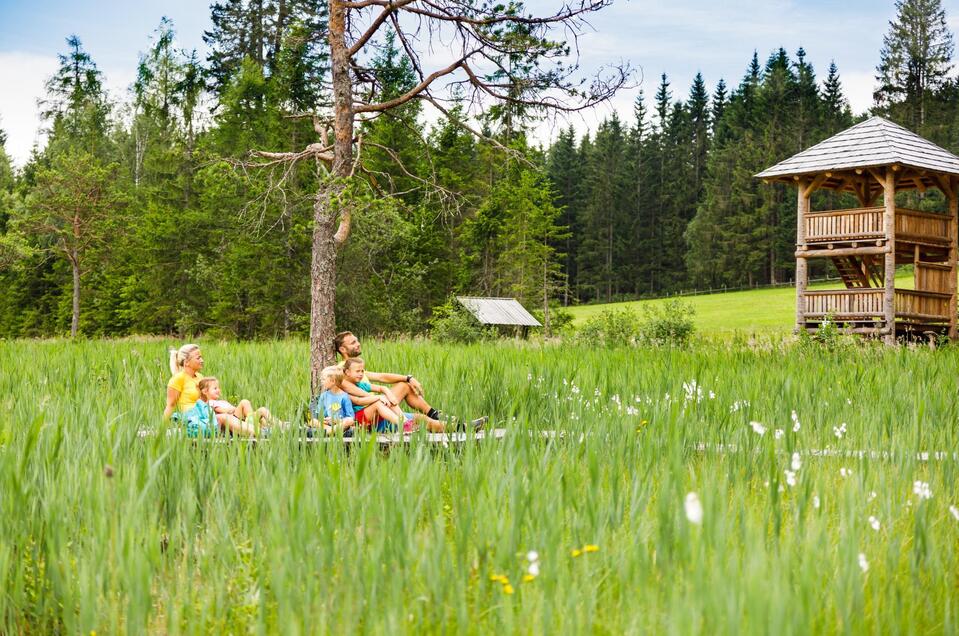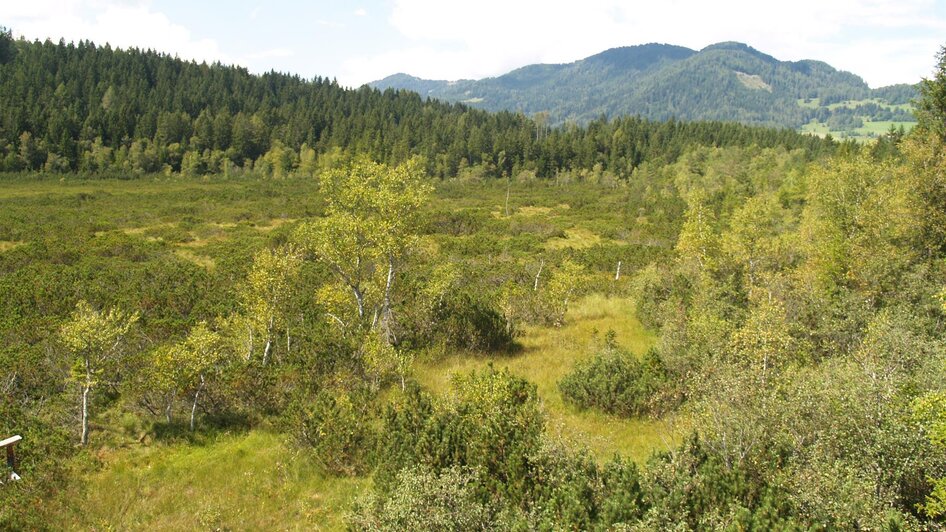Dürnberger Moor
Neumarkt in der SteiermarkThe Dürnberg moor radiates its own particular charm and mysterious origins. As a witness to the ice age, the moor invites you on a voyage of discovery, and promises visitors insights into its sensitive habitat. Rare animals and plants, such as the carnivorous sundew, can be found here. The look-out tower overlooks the moor and its landscape forms. The Dürnberg moor is a unique jewel of nature, an upland moor with a history dating back around nine hundred years to the ice age.
The Dürnberg bog was formed about 12,000 years ago.
Today peat mosses dominate the moor. The mountain pines and many small, delicate plants take root in them. Only the mountain pine and single spruces stick out. The rosemary heather forms delicate pink bell-shaped flowers, the round-leaved sundew can digest insects, which it catches via trap leaves with red tentacles. Sheath cottongrass is also pretty, with fruiting stems that resemble cotton balls.
From the bird world, hazel grouse, tree pipit and juniper thrush can be observed. The birch siskin breeds directly in the mountain pine stands - during the courtship display in spring its call can be heard: dschäddschädschäd. The grass frog is the only amphibian species that manages to penetrate the bog area. And red deer and roe deer find quiet roosting areas in the moor.
The Dürnberger Moor is easy to reach: From the Oberdorf parking lot northwest of Vockenberg, the trail leads past the Anawander homestead to the bog, complete with observation tower.
Documents
The Dürnberger Moor is freely accessible at all times.








